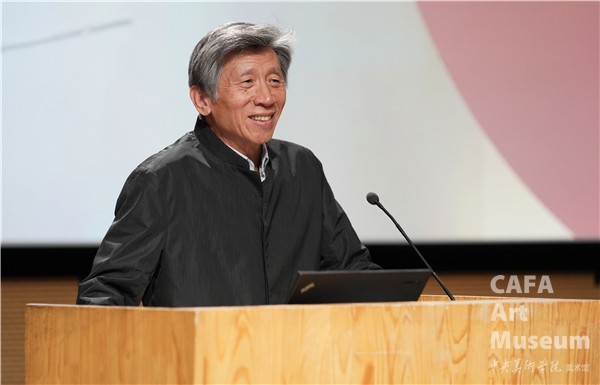
As the major solo exhibition of British artist Anish Kapoor opens at CAFA Art Museum (CAFAM) and Taimiao Art Museum in Beijing, China, the artist held a talk at CAFAM on November 11. He gave a lecture about his past works, shed light on the philosophy and influences behind his works, and engaged in an academic exchange with scholars in fine art, architecture and media art.
Anish Kapoor: Secret Echo and Shock
Fan Di’an, Director of CAFA and academic advisor of the Anish Kapoor exhibition, began the event with a speech on his understanding of Mr. Kapoor’s art. Explaining the title of the speech, “Secret Echo and Shock”, he said that people tend to express some opinions in front of Anish Kapoor’s works, yet at the same time they also feel speechless - a contradictory status unique to Kapoor’s works, as they both tell the many stories we’ve been expecting for and are told in a language strange to Chinese audience.

According to Mr. Fan, the first thing one feels about Mr. Kapoor’s work is color, especially blue and red. Mr. Fan thought of the blue color in Kapoor’s art as a silence of life, whereas the red the artist’s understanding of life. “If blue stands for wisdom and red stands for enthusiasm, the two combined is Kapoor’s art.” In “Destierro”, Kapoor put the two purest colors together. By removing other colors, the abstract expression of the world is thus formed, and the materiality of medium thus ascends to a spiritual nature.
Mr. Fan then summarized three distinctive forms of Kapoor’s works: pipe and concavity, reflection and absorption, earth and environment.
The pipe reminds him of a giant vortex and vessels of body, making him wonder if the artist enlarged a micro world or shrunk a macro world. Mr. Fan believed that Kapoor’s large-scale works are a space for people to reflect on the most existential questions, like where they’re from, what is modern, and where they are going. The way that Kapoor broke the limit of white cube or black cube of the museum space is also inspirational.
Although many 20th-century artists used transparent and reflective media, the way that Kapoor was innovative as he merged his perception of life and living environment into the materiality of stainless steel. With his reflective works, Kapoor brought to the audience a magnificent visual spectacle that transcends daily experience. They absorb surrounding sceneries like a giant container, and provoke thoughts of the relationship between material, subject and environment. As artists should be wary about the possibility of their works becoming ornamental plants in a public space, Mr. Fan believed that Mr. Kapoor’s works shed some light in this aspect.
Mr. Fan also believed that Kapoor’s works have a unique relationship with the earth. They form a vortex on the earth, absorbing people into the desire of exploring an unknown world.
Mr. Fan believes that Kapoor’s art is cross-cultural, which is mainly represented in his integration of ancient oriental philosophy and contemporary art scene. Mr. Fan said that Kapoor’s work reminded him of two important concepts in Upanishad, one is the unity of the individual spirit and the universal soul of the Buddhist, which echoes with the “unity of heaven and man” in Chinese culture; the other is the concept of reincarnation, which is also a historical concept in Chinese philosophy. It’s a great challenge of transforming these ancient concepts into contemporary perceptions. Anish Kapoor’s works has succeeded in it, and that’s why his works strike a chord with Chinese audience.
Anish Kapoor’s Keynote Speech
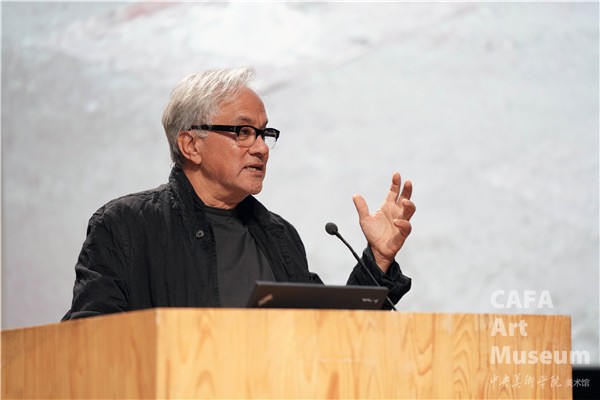
At the beginning of his speech, Mr. Kapoor emphasized that what makes him an artist is his art practice instead of his words. As an artist, he refused defining his work. He believes that the meaning of the works lie in the works themselves, and only when artists believe in their works that they could really shine with poetry and beauty.
Kapoor usually finish his works before perceiving and making sense of them. While we live in a world full of objects, a lot of which are incomprehensible and nondescript, Kapoor believes that our ultimate goal is to reach and understand these objects. When trying to make sense of the works he has done, Kapoor was usually swimming through his extensive knowledge of art history, philosophy and sociology. For example, after finishing Shooting to the Corner, he read the architectural concept of “pivot”, sexism, expressionism, Pollock, Goya, Duchamp - like a game within the artists.
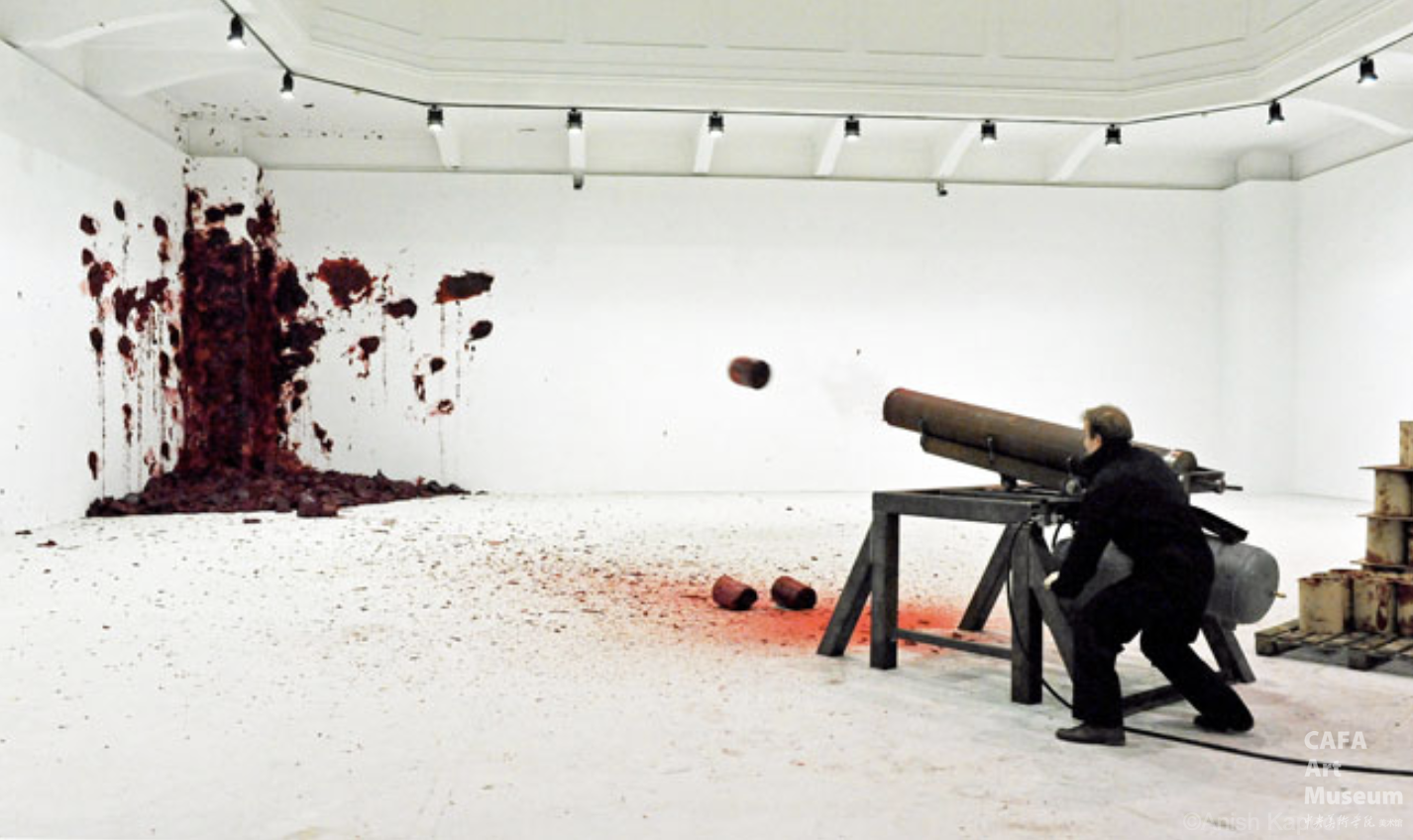
Shooting to the Corner
©Anish Kapoor
2008-2009
Mixed media
Dimensions variable
His reflections on various issues run through different works. Speaking of core concept of “Descension”, a piece of work that looks like a 6-meter-deep black hole on the ground, Kapoor said that beauty is always accompanied by and full of fear.
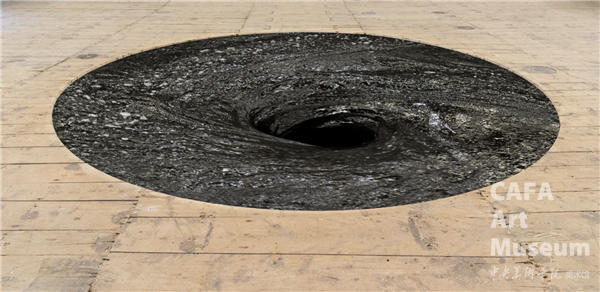
Descension
©Anish Kapoor
2015
Steel, water, motor, 500 x 500 cm
He has always been interested in the complex relationship between inside and outside, which led to the works “Memory”, "Leviathan", “Marsyas”, “Taratantara”, etc. He also expressed his great interest in concavity, especially concave mirrors, a negative form that absorbs and reflects the world. It is opposite of the forward and upward convexity, stands for femininity, darkness, the introvert, the hidden, death, which, according to Mr. Kapoor, is the future of us. Such introspection is the core of his art.
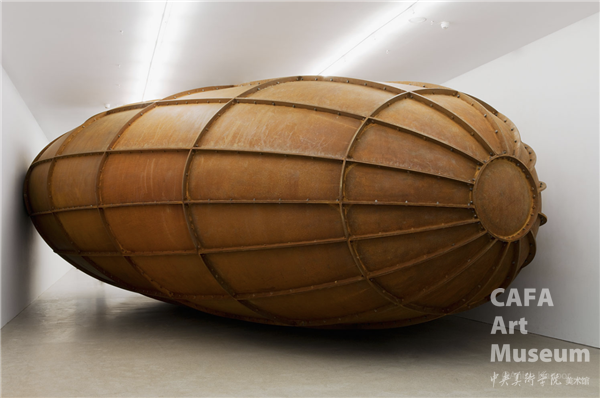
Memory
©Anish Kapoor
2008
Corten steel
14.5×8.97×4.48 m

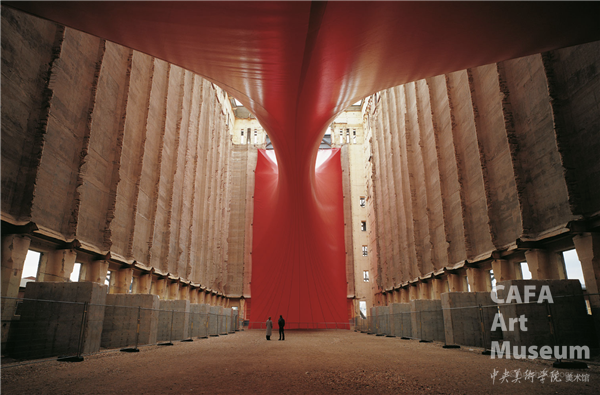
Taratantara
©Anish Kapoor
1999
PVC and steel
51.8×32.6×16 m
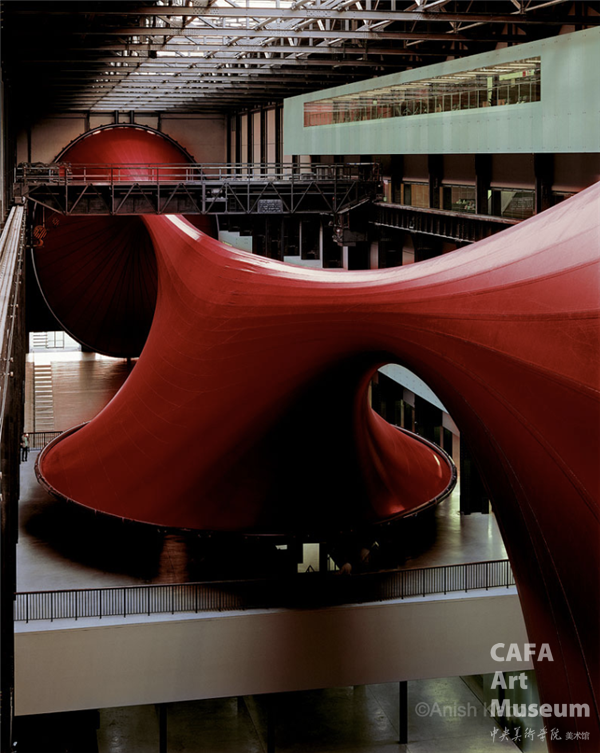
Marsyas
©Anish Kapoor
2002
PVC and steel
35×23×155 m
It is a known character of Kapoor’s stainless steel works that they usually look like a whole piece of material without joints. According to the artist, this effect is deliberately achieved to weaken the perception of the objects’ scale. By doing so the works appear mysterious and poetic.
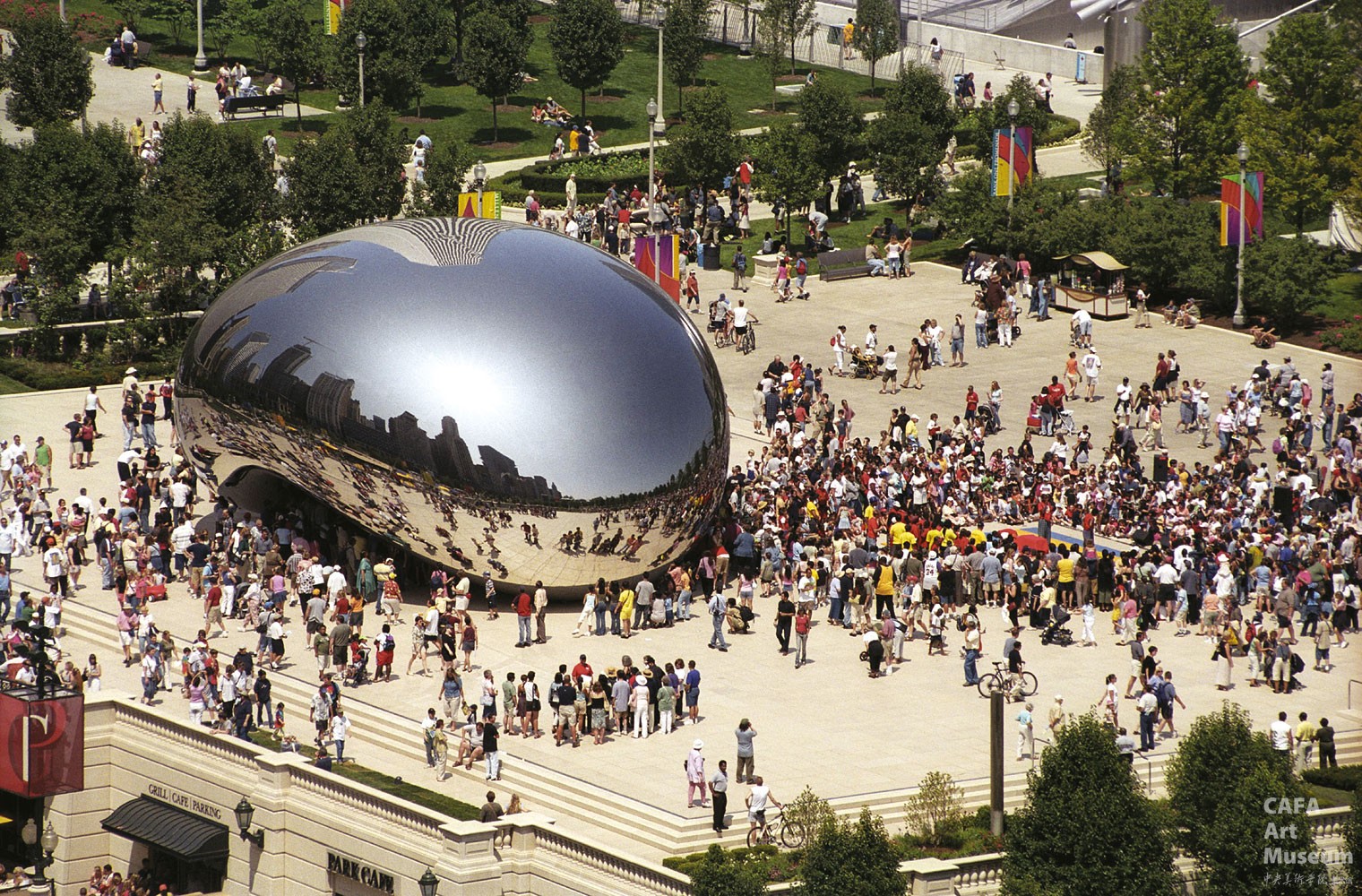
Cloud Gate
©Anish Kapoor
Stainless steel
10×20×12.8 m
Millennium Park, Chicago
Mr. Kapoor also spoke about his pigment works, saying he’s always been looking for a color that is immersive and shower-like, as if when people are looking at that color, they are wet in the shower of that color.
An artist sensitive to materiality, Kapoor is meticulous with the materials he uses in his works, be it cortex steel in “Memory”, PVC in “Ark Nova”, and Vantablack, the blackest black in the world at the time of his work.
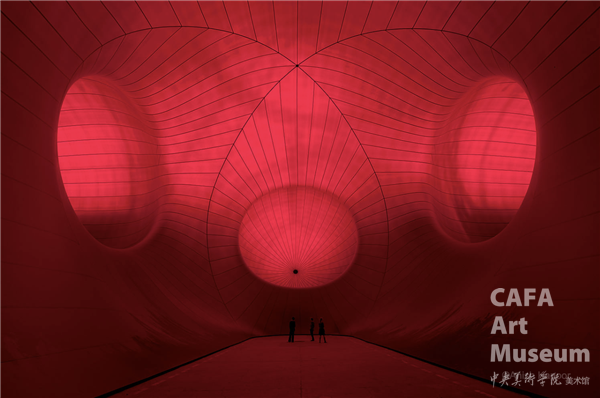
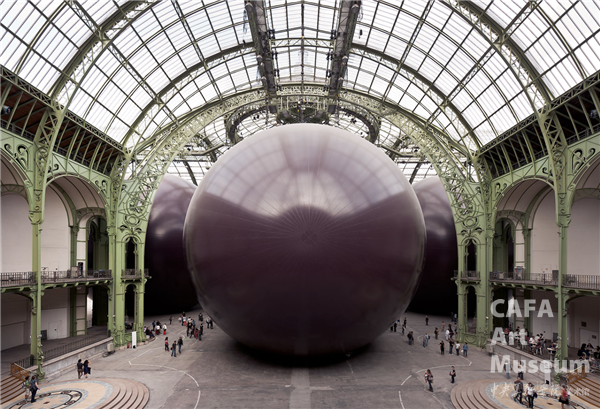
Leviathan
©Anish Kapoor
2011
PVC
33.6×99.89×72.23 m
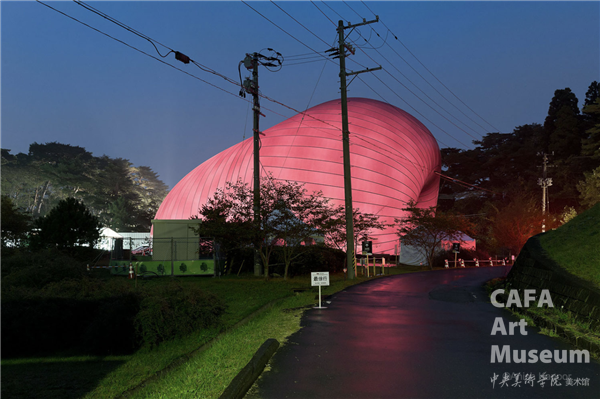
Ark Nova
©Anish Kapoor
P.V.C
18×29×36 m
Lucerne Festival, Matsushima, Japan, 2013
Lucerne Festival, Sendai, Japan, 2014
Academic Conversation
Following Mr. Kapoor’s keynote speech, the artist had conversation with professor Fan Di’an, sculptor and CAFA professor Sui Jianguo, oil painter and CAFA professor Yu Hong, architect and CAFA professor Zhu Pei, artist and CAFA professor Wang Yuyang, curator and CAFA professor Wang Chunchen and CAFA professor Yue Jieqiong.
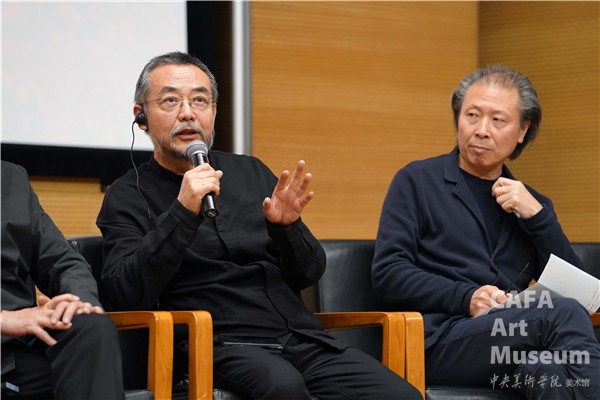
According to Professor Sui, while sculptures are usually displayed with concrete materials, Kapoor’s works transcend materiality, and thus achieve an ultimate visual mysteriousness. Such visual abyss is closely connected with the contemporary time, when people have infinite imagination of the universe thanks to the advance of technology.
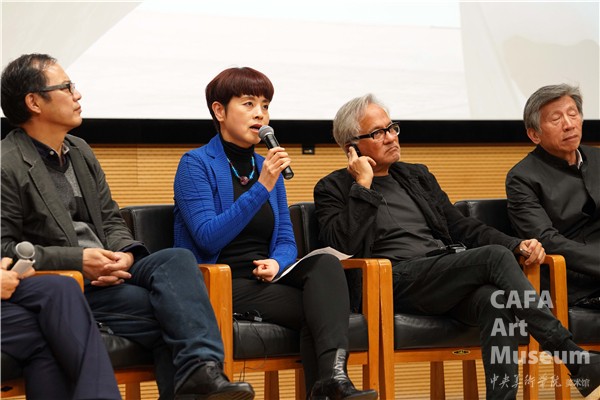
Professor Yu Hong believed that Kapoor’s work is like a paradox, or a balance between sense and sensibility. When Professor Yu asked Mr. Kapoor how his creation was influenced by his Indian origin, the artist acknowledged influence of oriental culture in his works, while in the meantime highlighted that artist shouldn’t only be an interpreter of his or her cultural origin, but also transcend it into exchanges with the humanity and universe.
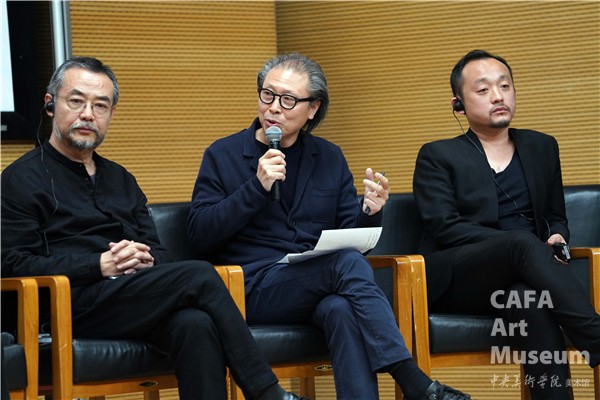
Professor Zhu Pei understands Kapoor’s works from the perspective of architecture. He said that while practical architectural language emphasizes “object”, architectural art stresses more on “void”. He believes that Kapoor’s work has the character of “Yin-yang” in Chinese culture, which was also represented in traditional Chinese paintings and architecture.
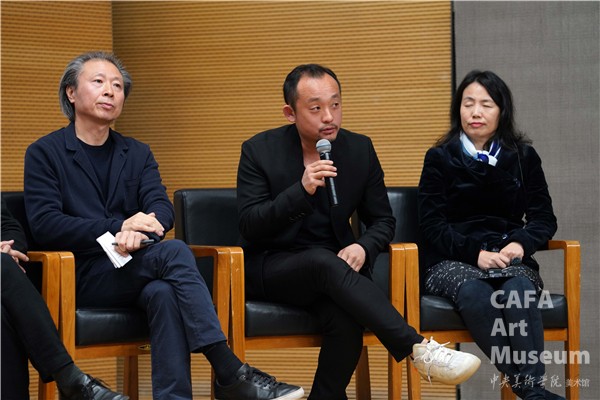
Professor Wang Yuyang
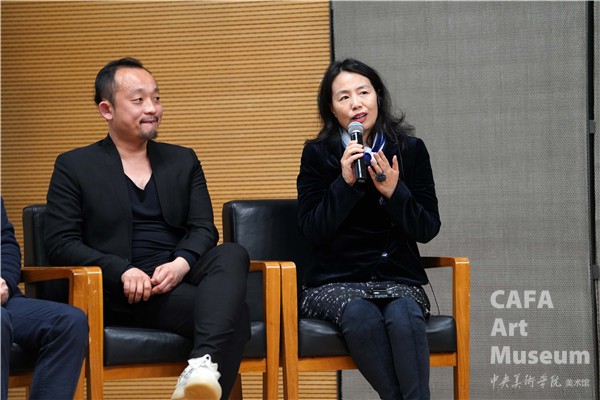
Professor Yue Jieqiong
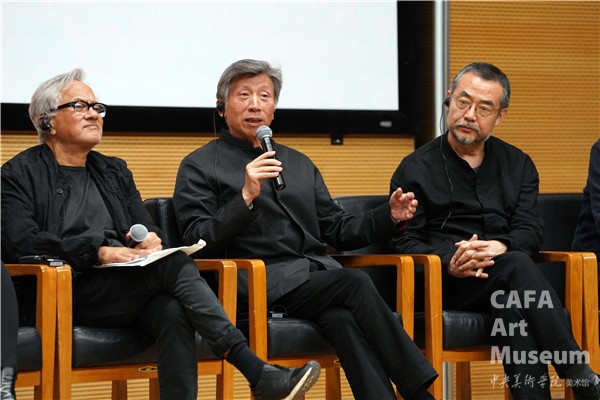
When professor Fan Di’an asked about contemporary art education, Mr. Kapoor said that academic institutions shouldn’t only teach students about techniques and aesthetics, but also inspire the students to feel and observe the world themselves, and have conversations with themselves.
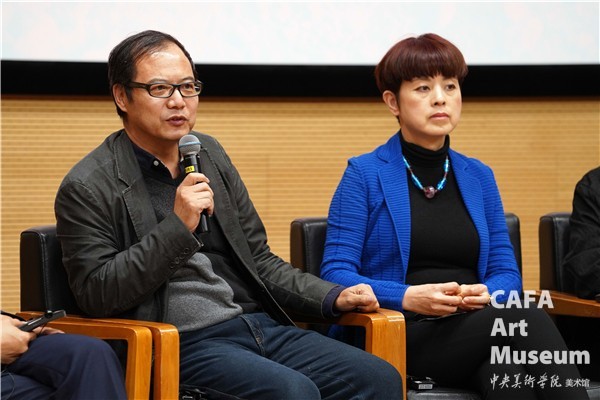
At the end of the conversation, professor Wang Chunchen acclaimed Mr. Kapoor’s work as the convergence of 21st century art. The purity of form, perfection of materials, and discussion of the relationship between art and life in his work are the issues mostly considered in the 21st century art world. When modernism falls into contemporary logic, everything is a complex blur, while Mr. Kapoor’s “refusal of definition” attitude towards his work is exactly what the modern art proposes.
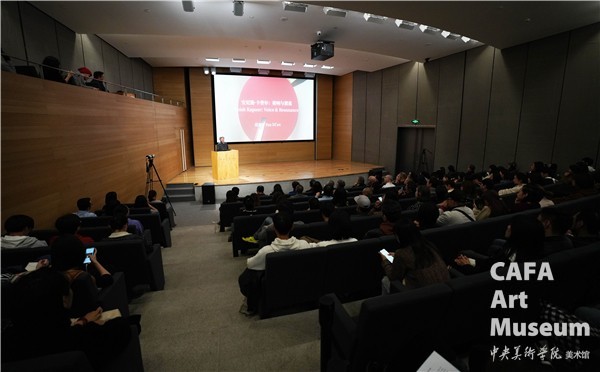
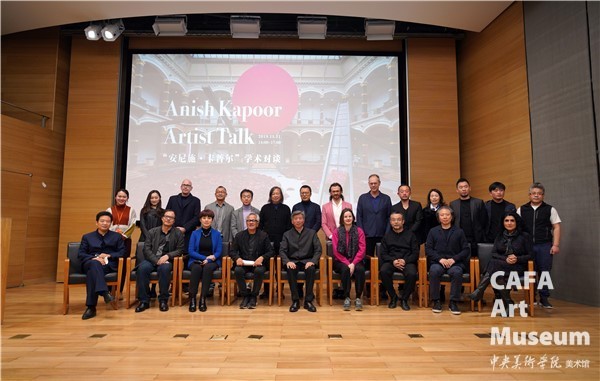
Photos of the works via Internet
Text Compiled by Lu Yufan
Photos of the talk by Li Biao
